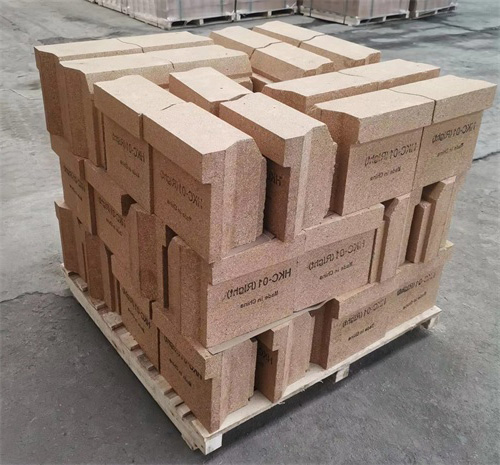Fireclay brick, also known as refractory brick, is a specialized type of brick that is designed to withstand high temperatures and harsh environments. These bricks are used in a variety of applications, from lining industrial furnaces to building pizza ovens.
The science behind fireclay brick is fascinating, and understanding how it works and why it lasts can help you appreciate the benefits of this unique material.
What is Fireclay Brick?
Fireclay brick is made from a mixture of clay and other materials, such as grog, which is ground-up, fired clay. The clay used in fireclay brick is highly refractory, meaning it can withstand very high temperatures without melting or degrading.
The exact composition of fireclay brick can vary depending on its intended use. For example, bricks used to line blast furnaces may contain more alumina, while bricks used in kilns may contain more silica.

How it Works
When fireclay brick is exposed to high temperatures, several physical and chemical processes occur that help it withstand the heat.
One key process is sintering, which is the process of bonding particles together through heat and pressure. When fireclay brick is fired at high temperatures, the clay particles fuse together, creating a dense, hard material that is resistant to heat and erosion.
Another important process is vitrification, which is the process of turning a substance into glass. When fireclay brick is heated to high temperatures, the clay particles melt and then recrystallize, creating a glassy matrix that further strengthens the brick.
The unique combination of sintering and vitrification results in a material that can withstand temperatures of up to 3000°F (1650°C) without degrading.
Why it Lasts
Fireclay brick is known for its durability and longevity, and there are several reasons why it lasts so long.
Firstly, fireclay brick is highly resistant to thermal shock. This means that it can withstand rapid changes in temperature without cracking or breaking. This is important in applications such as furnaces, where the temperature can fluctuate rapidly.
Secondly, fireclay brick is resistant to erosion and corrosion. It can withstand exposure to harsh chemicals and abrasive materials without degrading, which makes it ideal for use in environments such as steel mills and chemical plants.
Finally, fireclay brick is highly stable at high temperatures. It does not deform or melt when exposed to extreme heat, which means it can be used to line furnaces and kilns that operate at very high temperatures.
Applications of Fireclay Brick
Fireclay brick has a wide range of applications, and is used in industries such as steelmaking, glassmaking, and ceramics.
One of the most common applications of fireclay brick is in furnaces and kilns. Fireclay brick is used to line the interior of these structures, protecting them from the high temperatures and harsh conditions that are present during the heating process.
Fireclay brick is also used to build fireplaces and chimneys. These structures are exposed to high temperatures and corrosive gases, and fireclay brick provides a durable and long-lasting solution.
Fireclay brick is also used in the construction of pizza ovens and other types of wood-fired ovens. The high thermal mass of the brick helps to retain heat, which is essential for cooking food evenly and efficiently.
Conclusion
Fireclay brick is a remarkable material that has been used for centuries to withstand high temperatures and harsh environments. The unique combination of sintering and vitrification results in a material that is highly resistant to heat, erosion, and corrosion, and can last for decades or even centuries.
Understanding the science behind fireclay brick can help us appreciate the benefits of this material, and can help us to innovate and improve its performance in various applications. With the increasing demand for sustainable and energy-efficient materials, fireclay brick is gaining popularity in construction and industrial sectors.
In addition, research and development efforts are underway to improve the properties of fireclay brick, such as increasing its thermal conductivity and reducing its weight. These innovations can make fireclay brick even more versatile and useful in a wider range of applications.
Overall, the science behind fireclay brick is a testament to the ingenuity of humans to create materials that can withstand extreme conditions. Whether it's lining a blast furnace or cooking a pizza, fireclay brick is a reliable and durable solution that has stood the test of time.
Contact: Mgr. Han
Phone: 0086-13589497465
Email: 1255953279@qq.com
Add: Industrial Area of Lingzi Town,Zichuan District,Zibo City, Shandong,China